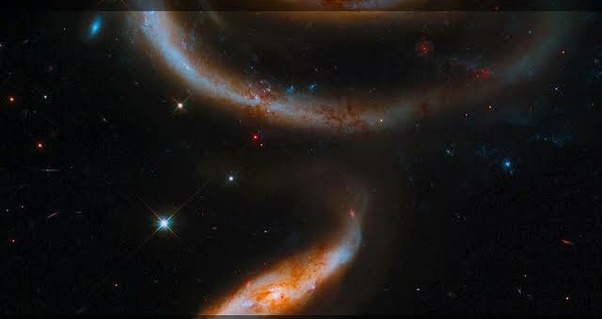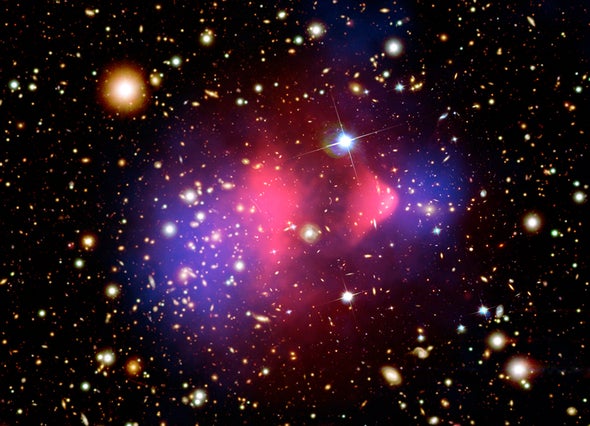Big Bang Theory Explained | Blog
The universe is everything from the smallest particles to the largest galaxies, space, time, and everything how it all did begin. The creation of the universe is the creation of everything. There are many theories and ancient Greek myths around the world that will explain the formation of the universe, but the most accepted one is the big bang theory.
The big bang theory explains that about billion years ago, there was a few millimeters wide supercharged black hole. About 13.7 billion years ago that tiny singularity exploded, and why it exploded, there is no evidence of it.
None of the scientists can explain the reason for the explosion. From this bang, the matter, energy, time, and space is created. After the explosion, two major stages can lead to the formation of the whole universe, called the radiation era and matter era.
The first era is the radiation era, characterized by the dominance of radiation in the universe after the explosion. The radiation era is further divided into epochs. The first epoch is the plank epoch in which there is no matter in the universe, only the energy and the ancestor of our four major forces exits. The ancestor force is called the super force, and the four forces that are decedents of super force are gravity, strong nuclear force, weak nuclear force, and electromagnetic force.
An event occurs, and gravity splits from the other three forces. And second epoch comes known as grand unification epoch in which strong nuclear energy broke away. Then the inflationary epoch begins in which the universe expands from the size of an atom to the size of grapefruit. The universe at this time is so hot and starts producing electrons, quarks, and antiquarks.
The last stage of the radiation era is lepton and nuclear epoch in which neutrons and protons are combining to form the atom. This is the end of the radiation era with the formation of the first chemical element helium.
With the formation of an element, the universe got the ability to form the matter; thus, the matter era begins. This era is also further divided into epochs that take billion of years to complete.
The first epoch of matter era is the atomic epoch in which the temperature of the universe cools down combing the electrons with helium forming the second element hydrogen. The hydrogen and helium combine to form the clouds in the next epoch known as galactic epoch and the atoms in clouds further combine to form the galaxies.
Next is the stellar epoch in which stars started to form inside the galaxies because of various reactions.
The repulsion effect between the stars causes the expansion of the universe making it so vast and huge. Various reactions between hydrogen and helium occur to increase the periodic table. These elements are responsible for the formation of everything that we can see today. That’s how the universe came into existence.
Big Bang Theory Explained:
The big bang theory explains that about billion years ago, there was a few millimeters wide supercharged black hole. About 13.7 billion years ago that tiny singularity exploded, and why it exploded, there is no evidence of it.
None of the scientists can explain the reason for the explosion. From this bang, the matter, energy, time, and space is created. After the explosion, two major stages can lead to the formation of the whole universe, called the radiation era and matter era.
Radiation Era
The first era is the radiation era, characterized by the dominance of radiation in the universe after the explosion. The radiation era is further divided into epochs. The first epoch is the plank epoch in which there is no matter in the universe, only the energy and the ancestor of our four major forces exits. The ancestor force is called the super force, and the four forces that are decedents of super force are gravity, strong nuclear force, weak nuclear force, and electromagnetic force.
An event occurs, and gravity splits from the other three forces. And second epoch comes known as grand unification epoch in which strong nuclear energy broke away. Then the inflationary epoch begins in which the universe expands from the size of an atom to the size of grapefruit. The universe at this time is so hot and starts producing electrons, quarks, and antiquarks.
Then the electromagnetic epoch comes were the last two forces eventually split away. Next, is the quark epoch characterized by so much hot temperature. After the quark epoch is hadron epoch in which the universe cools down to enough to bind the quarks and to form the protons and neutrons.
The last stage of the radiation era is lepton and nuclear epoch in which neutrons and protons are combining to form the atom. This is the end of the radiation era with the formation of the first chemical element helium.
Matter Era
With the formation of an element, the universe got the ability to form the matter; thus, the matter era begins. This era is also further divided into epochs that take billion of years to complete.
The first epoch of matter era is the atomic epoch in which the temperature of the universe cools down combing the electrons with helium forming the second element hydrogen. The hydrogen and helium combine to form the clouds in the next epoch known as galactic epoch and the atoms in clouds further combine to form the galaxies.
Next is the stellar epoch in which stars started to form inside the galaxies because of various reactions.
The repulsion effect between the stars causes the expansion of the universe making it so vast and huge. Various reactions between hydrogen and helium occur to increase the periodic table. These elements are responsible for the formation of everything that we can see today. That’s how the universe came into existence.






Comments
Post a Comment